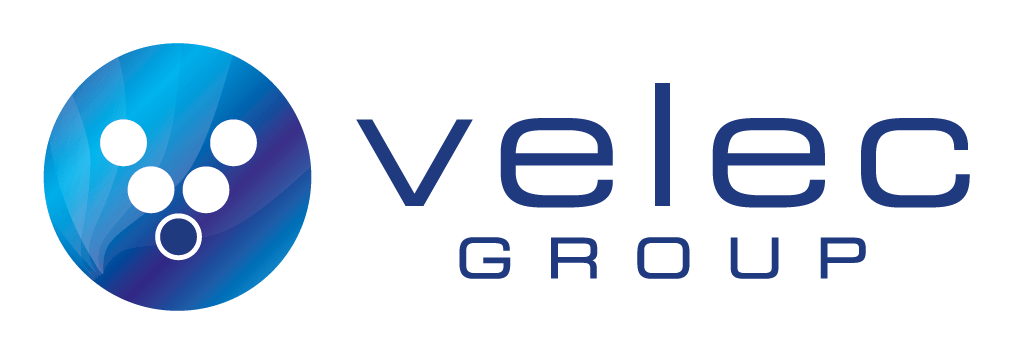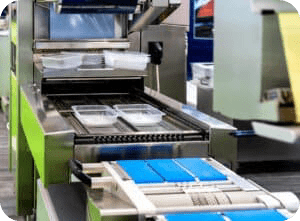Picture this: your line is running smoothly. Products are sealed, demand is high, and everything looks on track. Then it happens — a case packer jams, a label misprints, or the palletizer grinds to a halt. Suddenly, the entire plant is waiting. Orders slip. Costs rise. Profits evaporate.
That’s the reality of end of line packaging. It may be the last step, but it’s the one that decides whether your products leave the plant on time, in spec, and at the lowest possible cost. From case forming to palletizing, this stage is about far more than moving boxes. It’s about protecting food safety, ensuring compliance, keeping throughput steady, and safeguarding customer trust.
Quick Takeaways
- End-of-line packaging is where profits are protected or lost. It’s the stage that decides if your products leave the plant on time and in spec.
- Conveyors and accumulation keep lines moving. Well-placed buffers prevent bottlenecks and can pay for themselves in just a few months.
- Hygienic, washdown-ready design saves time and money. Open frames, stainless steel, and CIP options cut cleaning downtime and utility costs.
- Fast changeovers are critical in today’s SKU-heavy world. SMED methods and recipe-driven adjustments slash downtime between runs.
- OEE and a few smart KPIs show you what to fix. Tracking sanitation minutes, label success rates, and buffer “saves” exposes real performance gaps.
- Sustainability and compliance pressures are rising. From FSMA traceability rules to packaging EPR laws, EOL is where you stay audit- and market-ready.
- Investments here deliver quick ROI. Cobot palletizers, smarter conveyors, and labeling upgrades often pay back in 12–18 months or less.
In this article, we’ll explore why end of line packaging is a strategic investment, not just an operational necessity. You’ll learn what equipment makes up a modern EOL system, how hygienic design and smart conveyors prevent costly bottlenecks, and which upgrades deliver the fastest ROI. We’ll also look ahead at the compliance and sustainability rules reshaping packaging today — and how future-ready EOL systems keep your business competitive.
What Is End-of-Line (EOL) Packaging?
When people talk about end-of-line packaging, they mean the final stage of production—the point where finished products are prepared for shipping. It’s everything that happens after your product is sealed in its primary pack.
That includes:
- Forming and sealing cases
- Labeling cartons with dates, barcodes, or traceability codes
- Palletizing boxes onto skids (sometimes by robots or cobots)
- Wrapping and strapping pallets so they’re ready to ship
Think of it as the “last mile” inside your plant. Upstream, you’re focused on cooking, filling, or sealing your food product. Down here at the end, the goal is to make sure everything leaves the plant in the right condition, on time, and with the right data attached.
Why does it matter so much? Because bottlenecks at this stage don’t just slow one machine—they hold up the entire production line. And since this is where labels, codes, and pallet IDs are finalized, it’s also where compliance and traceability records are locked in.
For food manufacturers, this stage has its own twist: systems must be hygienic, easy to clean, and washdown-ready. That’s why stainless conveyors, IP69K-rated components, and clean design features are so common in food end-of-line setups.
Takeaway: End-of-line packaging isn’t just “the end.” It’s the safeguard that ensures your products are shipped safely, compliantly, and profitably.
Hygienic Design by Default
Food packaging has an extra challenge that many other industries don’t face: hygiene. Even if the product is already sealed, the equipment at the end of the line still has to stand up to constant cleaning and strict safety rules. If it can’t, you’re looking at more downtime, higher costs, and even compliance risks.
So what makes end-of-line equipment “food ready”? It usually comes down to a few key design choices:
- Stainless steel frames instead of painted or coated surfaces.
- Open, sloped structures that let water drain away instead of pooling.
- IP69K-rated motors and sensors that can handle high-pressure washdowns.
- Tool-less belt removal so cleaning crews don’t waste time with wrenches.
- CIP (clean-in-place) systems that cut water and chemical use.
Several global standards back this up. The Food Safety Modernization Act (FSMA) in the U.S. requires thorough record-keeping and sanitation. Groups like EHEDG (European Hygienic Engineering & Design Group) and 3-A Sanitary Standards provide design guidelines that most buyers now expect as table stakes.
The real business impact? Hygienic design doesn’t just keep auditors happy—it saves time and money. Velec’s CIP-ready conveyors, for example, can cut sanitation minutes and water use nearly in half. That means faster changeovers, less downtime, and lower utility bills.
Takeaway: In food plants, “washdown ready” isn’t optional. It’s the difference between a packaging line that drains profits and one that runs safely, efficiently, and compliantly. Hygiene and Efficiency: The Role of Clean-In-Place Equipment
Bottlenecks and Line Architecture: Flow, Accumulation, and Balance
Every packaging line has a natural “constraint.” It might be your case packer, your labeler, or your palletizer. When that machine stops, everything behind it piles up. This is what people mean when they talk about bottlenecks.
The solution isn’t just buying faster machines—it’s about designing the line to absorb small interruptions. That’s where accumulation conveyors come in. Think of them as shock absorbers for your packaging line. If a palletizer pauses while a skid is swapped out, accumulation keeps the packer running for a few minutes instead of forcing a full stop.
How much accumulation do you need? A simple rule of thumb is the “two-fault rule.” Size your buffer so it can cover two common delays—like a pallet change and a label roll swap—without shutting down your constraint machine. This kind of planning often pays for itself in just a few months.
Controls matter too. Smart conveyors use sensors and logic to prevent cartons from crashing into each other (called back pressure) and to balance speed across the system. Done right, this means fewer jams, less product damage, and smoother flow overall.
Takeaway: Bottlenecks aren’t solved by speed alone. They’re solved by smart line design—especially with well-placed accumulation that keeps your constraint running even when the rest of the system hiccups.
Changeovers and SKU Proliferation: How to Stay Flexible
If you run a food plant today, you’re probably juggling more product variations than ever before. Different flavors, pack sizes, private label contracts—SKU proliferation is real. The challenge is that every time you switch from one product to another, your line has to change over. And changeovers cost time.
Traditional changeovers can take 30 minutes, an hour, or more. During that time, nothing is being packed, but labor and utilities are still ticking away. That’s why smart plants use SMED (Single-Minute Exchange of Dies) principles—basically, methods for cutting changeover tasks down to just a few minutes.
Here’s what that looks like in practice:
- Tool-less adjustments so guides and rails can be reset quickly.
- Color-coded or RFID-tagged parts to prevent mix-ups.
- Recipe-driven machines where you select the next SKU on the screen and motors adjust automatically.
- On-screen instructions with photos or videos so operators don’t lose time guessing.
Even small improvements here add up fast. Some plants report 30–40% reductions in changeover time, which can boost OEE (Overall Equipment Effectiveness) without adding a single new machine.
A good way to pressure-test vendors is to create a “Top 5 Changeover List.” Ask them to run those scenarios during factory acceptance testing, with a stopwatch running. If they can’t prove it in their shop, chances are they won’t hit the targets in yours.
Takeaway: More SKUs don’t have to mean more downtime. With the right design, your end-of-line packaging can switch gears quickly and keep production flowing.
Measuring Success — OEE and the Right KPIs
How do you know if your end-of-line packaging is working well? The most common yardstick is OEE (Overall Equipment Effectiveness). It combines three things:
- Availability: Is the line running when it’s supposed to?
- Performance: Is it running at the right speed?
- Quality: Are the cases, labels, and pallets leaving without defects?
When one of these slips, your OEE score drops.
For packaging lines, the usual culprits are:
- Short stops from label jams or tape issues
- Long changeovers between SKUs
- Cartons piling up when a palletizer is down
- Misprinted or unreadable labels that need rework
So what’s a “good” number? World-class plants sometimes hit 85% OEE, but most food packaging lines live in the 70–80% range. The goal isn’t to compare yourself to a perfect plant—it’s to find the losses that matter most and shrink them.
Beyond OEE, smart buyers track a few extra KPIs:
- Minutes to clean: How long sanitation actually takes between runs.
- Changeover time per SKU: Useful when your product portfolio keeps growing.
- First-pass label success: How often the label scans correctly the first time.
- Buffer save time: How many minutes of downtime your accumulation conveyors prevented.
Takeaway: Don’t chase a single OEE number. Instead, focus on the few metrics that tie directly to your plant’s pain points—like changeovers, sanitation, or labeling. That’s where the biggest gains (and paybacks) come from.
ROI and the Business Case: What Pays Back Fastest?
Quick Wins
- Accumulation conveyors – often pay back in months
- Cobot palletizers – ROI in 12–18 months
- Label/vision validation – improves throughput and avoids rework
Hygiene as ROI
CIP-enabled conveyors can cut water and chemical use by 50%, while shaving hours off sanitation downtime.
Conclusion
End-of-line packaging may sit at the very end of your production line, but it has an outsized impact on your business. This is where every carton, label, and pallet comes together—and where profits can be protected or lost. When the system runs well, products leave on time, customers are satisfied, and compliance boxes are ticked. When it falters, downtime, rework, and missed shipments pile up fast.
The good news is that you don’t have to accept bottlenecks, long changeovers, or sanitation headaches as the cost of doing business. Today’s hygienic conveyors, cobot palletizers, and smart data tools make it possible to boost OEE, simplify compliance, and even cut cleaning time in half. With new rules around food traceability and packaging sustainability, having a future-ready end-of-line system is more than an upgrade—it’s insurance for your brand and your bottom line.
If you’re considering a line expansion, looking to ease labor pressure, or simply want to prevent costly stoppages, now is the time to take a closer look at your end-of-line setup.
👉 Talk to Velec Systems about a packaging line assessment. We’ll help you identify the hidden constraints and find the upgrades that deliver the fastest payback while keeping your operation safe, compliant, and competitive.
What is end-of-line packaging in food manufacturing?
End-of-line packaging in food manufacturing is the final production stage where finished products are cased, labeled, palletized, and wrapped for shipping. It ensures each item leaves the plant safely, compliantly, and ready for distribution while maintaining traceability and efficiency.
How fast is the ROI on robotic palletizers for small food plants?
Robotic palletizers in small food plants typically achieve ROI within 12–18 months. They reduce manual labor, improve safety and ergonomics, and increase line throughput—helping processors recover costs quickly while minimizing downtime and workplace injuries.
Why is hygienic design important for food-grade end-of-line packaging?
Hygienic design keeps food-grade end-of-line packaging systems safe and compliant. Stainless steel frames, open structures, and CIP options reduce cleaning time, prevent contamination, and support FSMA, EHEDG, and 3-A standards—protecting both product integrity and uptime.
How do end-of-line systems support FSMA 204 traceability?
End-of-line systems support FSMA 204 traceability by capturing and linking lot codes, case IDs, and pallet data through scanners and vision systems. This information is exported in EPCIS 2.0 format, enabling complete traceability and rapid response during recalls or audits.
Can end-of-line packaging help with sustainability compliance?
Yes. End-of-line packaging helps meet sustainability and EPR compliance by right-sizing cartons, minimizing overpackaging, and using recyclable or compostable materials. These improvements align with packaging regulations such as California SB 54 and the EU Packaging and Packaging Waste Regulation (PPWR).
External References
Dorner Conveyors. Understanding Accumulation Conveyors. ifoodds.com
FDA. Food Traceability Final Rule. fda.gov
Opal Group. FSMA Rule 204 and Traceability for FMCG Brands. theopalgroup.com







